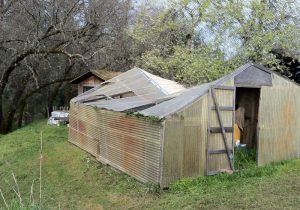
Serviceability, Deflection Limits, and Dead Load Equals Zero
Section 1604.3 is titled “Serviceability” and Table 1604.3 is titled “Deflection Limits.” The IBC has refrained from any reference to vibration or any other deformations that may have an adverse impact on the intended use and performance of a structure because:
1. There is no objectively defined standard for structural vibration. Acceptable limits are frequently subjective and highly dependent on the specific requirements of the occupants of a building. This information is not necessarily available to the building official.
2. It is impossible for the building official to anticipate everything that can “adversely affect the intended use and performance” of a building.
IBC Sections 1604.3.1 through 1604.3.6 provide objectively defined deflection limits for structural members. Limits more restrictive than these should properly be a matter of negotiation between the design professional and the client and should not be part of a life-safety building code. For example, there are situations in which sensitive computer, optical, and mechanical equipment require extraordinary measures to provide adequate conditions for their intended use. These measures are often very complex and well beyond the life-safety requirements of most structures.
We sometimes receive the following question on footnote g to Table 1604.3 which reads: “For steel structural members, the dead load shall be taken as zero.”
Q: Does Footnote g to Table 1604.3 mean that when we compute the service deflection of a steel beam, we only put the live load on the beam and keep the computed deflection within L/240? And if so, then why is the other limit of L/360 (under live load only) provided? Is it only for structures made of materials other than steel?
A: Sometimes we can find the best answer to a code-related question by doing a historical check on the introduction of the provision into the code. Our check revealed that Footnote g to Table 1604.3 was approved for inclusion in the 2000 IBC (it was Footnote f back then), based upon its historical acceptance in legacy codes – the NBC, SBC and UBC. Here is the code change to prove it!
D = 0 for steel structures has no other strictly technical justification that we can find. The D=0 footnote creates two deflection limits in Table 1604.3 for steel floor members: 1) l/360 by the “L” column, and 2) l/240 by the “D + L” column. Because of the following sentence in 2012 IBC Section 102.1: “Where, in any specific case, different sections of this code specify different materials, methods of construction or other requirements, the most restrictive shall govern,” the more restrictive deflection limit of l/360 applies.
